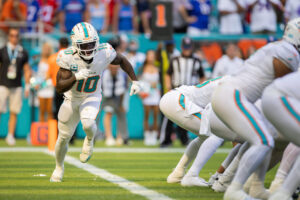A pair of black holes have been observed colliding for the first time in the ancient universe. The observations, by the James Webb Space Telescope, reveals a merger of two galaxies and the monster black holes at their centers when the universe was only 740m years old, about a 20th of its current age.
The discovery that massive mergers appear to have been common in the infant universe may help explain how supermassive black holes like the one at the heart of the Milky Way grew to such immense dimensions.
Prof Roberto Maiolino, an astrophysicist at the University of Cambridge, and a member of the team behind the observations, said: “One problem we have in cosmology is explaining how these black holes manage to get so big become In the past we have always talked about devouring matter very quickly or being born big. Another possibility is that they grow very quickly by merging.”
Until now, it was not clear whether the merger of galaxies – which is known to have happened – would also result in the black holes at the centers turning into a single cosmic sinkhole. Recent models have suggested that one of them would be kicked out into space to become a “wandering black hole”.
The latest observations use the Webb Telescope’s ability to reach the far reaches of the cosmos and thus provide the first glimpse of galactic mergers in the distant past.
In the process of merging, black holes devour large amounts of matter and also release a lot of energy, and this activity has characteristic spectral features that enable astronomers to identify them. This activity revealed the collision underway in a system called ZS7, with one of the two black holes estimated to be 50m times the mass of the sun.
“The mass of the other black hole is probably similar, although it is much more difficult to measure because this second black hole is buried in dense gas,” Maiolino said.
Subsequent observations showed that about a third of black holes detected in this period appeared to be merging. “This could be a real conduit for the rapid growth of early black holes,” he said.
Prof Andrew Pontzen, a cosmologist at University College London, who was not involved in the research, said: “One of the big gaps in our cosmic history book is where giant black holes, millions or billions of times the mass of the sun , came from.. Are they somehow born big, or are they built from initially smaller black holes that break up to form the giants? [the Webb telescope] is indirect, but it helps suggest a major role for black hole collisions.”
Scientists hope to be able to make direct measurements of ancient collisions in the future using the next generation of gravitational wave detectors, including the Laser Interferometer Space Antenna (Lisa) mission, which was recently approved by the European Space Agency.
The findings are published in the Monthly Notices of the Royal Astronomical Society.





